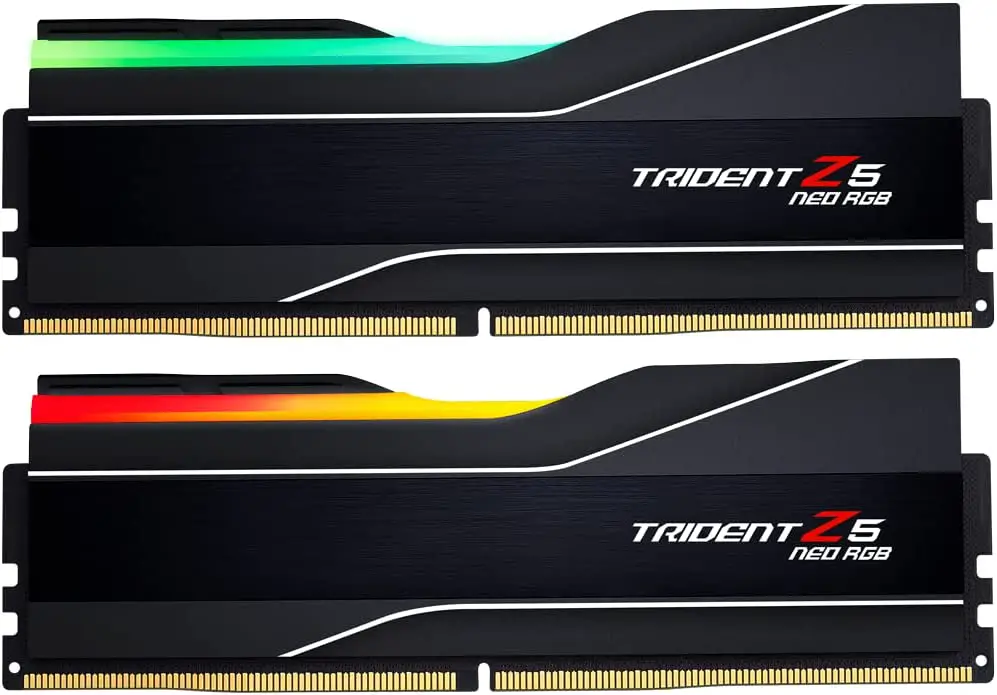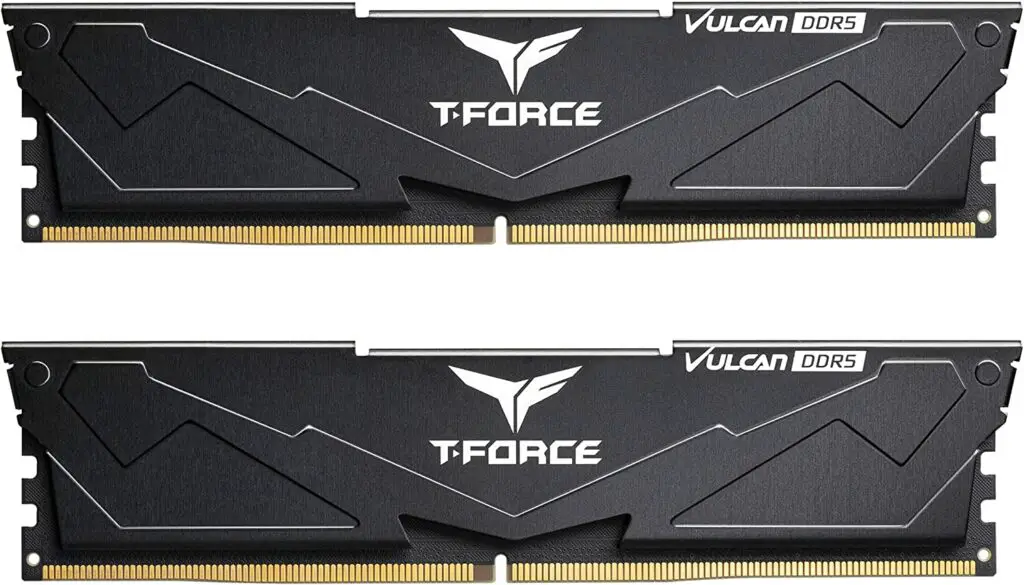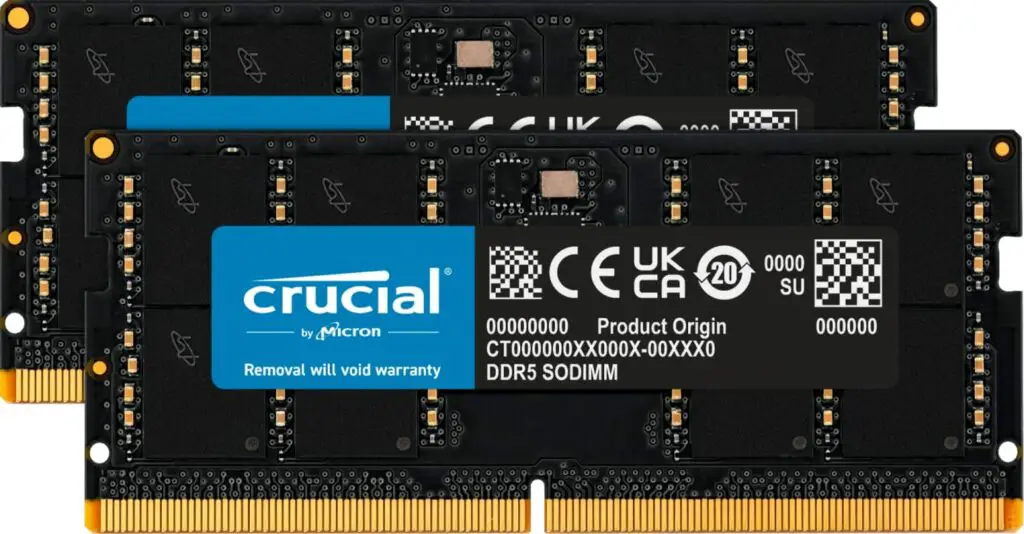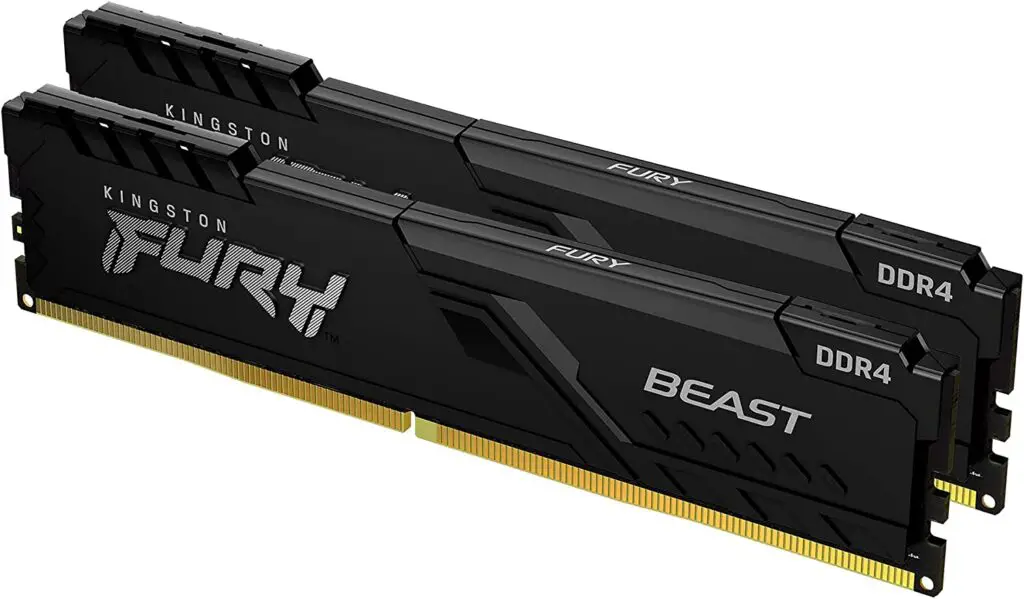Let’s find out Top picks for the RAM for Music Production and how much ram for music production is necessary.
When it comes to music production, having the right hardware is essential. One of the most important components of a music production system is RAM. RAM, or random access memory, is used to store data that is currently being used by the computer. This includes things like audio files, plugins, and software instruments.
Having enough RAM is important for music production because it allows you to work with larger projects and more complex sounds. If you don’t have enough RAM, your computer will start to slow down and you may experience crashes.
There are a few things to keep in mind when choosing RAM for music production. First, you need to decide how much RAM you need. For most music producers, 16GB of RAM is a good starting point. If you plan on working with large projects or complex sounds, you may need 32GB or more.
Second, you need to choose the right type of RAM. There are two main types of RAM: DDR4 and DDR5. DDR5 is the newer type of RAM and it is faster than DDR4. However, it is also more expensive.
Finally, you need to choose the right speed of RAM. The speed of RAM is measured in MHz. For music production, you will want to choose RAM that is at least 3200MHz.
Here is the recommended list of the Best RAM for Music Production
- G.Skill Trident Z5 NEO RGB Series
- TEAMGROUP T-Force Vulcan DDR5
- CORSAIR VENGEANCE DDR5
- Crucial RAM 32GB Kit DDR5
- Lexar Hades RGB 32GB DDR4
- Kingston FURY Beast 32GB DDR4
How much ram for music production?
Here are some general recommendations for how much RAM you need for music production:
- 8GB: Basic music production
- 16GB: Mid-range music production
- 32GB: Advanced music production
The amount of RAM required for music production can greatly depend on the complexity of your projects and the software you’re using. However, as a general guideline:
Basic Level or Hobbyist: If you’re just starting out or creating music as a hobby and not using many plugins or tracks, 8GB of RAM can be sufficient.
Intermediate Level: If you’re doing more complex work, like using multiple plugins, synthesizers, or samples, or running several applications simultaneously, then 16GB of RAM would be more suitable.
Professional Level: For professional music production that involves heavy multitasking, numerous virtual instruments, extensive sample libraries, and high track counts, 32GB to 64GB of RAM would be ideal to ensure smooth and efficient operations.
Keep in mind these are general guidelines and actual needs can vary. It’s also worth noting that other factors like your CPU and storage drive (HDD or SSD) play significant roles in your computer’s overall performance in music production. If possible, it’s generally better to have more RAM than less, as this offers more headroom for your projects to grow in complexity.
16gb or 32gb ram for music production?
Ultimately, the decision of whether to get 16GB or 32GB of RAM for music production depends on your individual needs and budget. If you are serious about music production and plan on working with large projects or complex sounds, then 32GB of RAM is the best option. However, if you are on a budget or only plan on working with smaller projects, then 16GB of RAM will be sufficient.
Which RAM is good for music production?
The best RAM for music production is RAM that has a high clock speed and a low CAS latency. This will ensure that your computer can access data quickly and efficiently, which is important for music production.
In addition to choosing the right RAM, there are a few other things you can do to improve the performance of your music production system. First, make sure you have a fast hard drive or SSD. Second, install a good graphics card. Third, make sure your computer has a powerful processor.
By following these tips, you can create a music production system that will help you create great music.
Here are some additional things to consider when choosing RAM for music production:
- Compatibility: Make sure the RAM you choose is compatible with your music production motherboard.
- Size: You will need to decide how much RAM you need. For most music producers, 16GB is a good starting point.
- Speed: RAM speed is measured in MHz. The higher the speed, the faster the RAM will be.
- Latency: RAM latency is measured in clock cycles. The lower the latency, the faster the RAM will be.
By considering these factors, you can choose the best RAM for your music production needs.
Is 32GB RAM overkill for music?
Whether 32GB of RAM is considered “overkill” for music production depends significantly on the scale and complexity of your projects.
For most hobbyists and many professionals, 16GB of RAM is typically sufficient to run a Digital Audio Workstation (DAW), along with multiple plugins and virtual instruments.
However, if you’re a professional working on large projects, involving numerous tracks, complex plugins, extensive sample libraries, or high-quality virtual instruments, then 32GB of RAM could significantly enhance your workflow.
Also, having 32GB of RAM can be beneficial for multitasking, allowing you to efficiently run your DAW alongside other demanding applications, like video editing software or large sample libraries.
Furthermore, having extra RAM can also be a form of future-proofing your system. As software becomes more advanced and resource-demanding over time, having more RAM can help ensure your system remains capable of running newer versions of software and handling more complex projects in the future.
So, while 32GB of RAM might be more than necessary for some music producers, it’s not considered overkill for those dealing with large, complex projects or for those who are planning for future needs.
Do you need 128 GB RAM for music production?
For the vast majority of music production scenarios, 128GB of RAM is likely more than necessary. Most music producers, whether they’re amateurs or professionals, will find that 16GB to 32GB of RAM is sufficient for running a Digital Audio Workstation (DAW), along with multiple plugins and virtual instruments. Even heavy users typically don’t exceed the need for 64GB of RAM.
There might be some very specific, high-end professional scenarios where 128GB of RAM could be utilized effectively, such as:
- Orchestral scoring: If you’re working on orchestral scores that utilize massive sample libraries, where each instrument is multi-sampled at different velocities and articulations, the extra RAM could be beneficial.
- Sound design for films: For high-end film sound design, where numerous software and large audio files are being used simultaneously, having more RAM could enhance workflow efficiency.
- 3D Audio Production: With the rise of 3D audio formats like Dolby Atmos, music production can potentially require more resources, especially when working on complex mixes with numerous tracks and plugins.
However, such cases are rare, and 128GB of RAM would be considered excessive for most music producers.
Before upgrading to such a large amount of RAM, it’s essential to ensure that your computer’s motherboard can support it. Also, consider whether the money would be better invested in other aspects of your music production setup like a faster CPU, a more efficient storage solution, a better audio interface, or higher quality monitors.
Always remember that while having more resources can be beneficial, the skill of the music producer is far more crucial to the quality of the music than the specifications of their computer.
1- G.Skill Trident Z5 NEO RGB Series (AMD Expo) 32GB DDR5 Desktop Memory
A cut above the rest in terms of performance and aesthetics, the G.Skill Trident Z5 NEO RGB Series (AMD Expo) is an exceptional RAM choice for music production. This DDR5 RAM offers an impressive speed of 6000MHz, which is far ahead of many competing modules on the market.
Pros
- High Performance: The Trident Z5 NEO offers an impressive speed of 6000MHz, which is crucial for smooth operation of high-demand music production software and tools. Its latency timings of CL36-36-36-96 are also commendable, allowing for efficient data transfer and rapid responsiveness.
- Dual-Channel Configuration: This set of two 16GB RAM modules enables dual-channel operation, which can significantly enhance the bandwidth and overall system performance, especially for multitasking and memory-intensive tasks common in music production.
- AMD Optimization: The Trident Z5 NEO is designed with AMD systems in mind. This means that users operating on AMD platforms can expect optimal compatibility and performance.
- RGB Aesthetics: For users who want their setup to shine, the Trident Z5 NEO features RGB lighting, giving your rig a dazzling look.
Cons
- High-End Price: The premium features and performance of the Trident Z5 NEO come at a higher price compared to many other RAM modules.
- RGB Requirements: The RGB lighting might require additional setup and can be seen as an unnecessary feature for users who prioritize function over form.
Beyond music production, the high-speed and high-capacity of the G.Skill Trident Z5 NEO make it an excellent choice for other demanding tasks. These include gaming at high settings, video editing, 3D rendering, and other professional applications that require fast and smooth data processing.
The G.Skill Trident Z5 NEO is a premium RAM module that offers excellent performance and a sleek aesthetic design. Though it comes with a higher price tag, its high-speed operation and compatibility with AMD platforms make it an excellent investment for serious music producers and professionals.
2- TEAMGROUP T-Force Vulcan DDR5 32GB Desktop Memory
The TEAMGROUP T-Force Vulcan DDR5 32GB (2x16GB) is a formidable option for those looking to bolster their computer’s performance. With its impressive 5600MHz speed and the more advanced DDR5 technology, this RAM ensures a buttery smooth operation for all your music production needs.
Pros
- Impressive Speed: With a clock speed of 5600MHz, this DDR5 RAM is well-equipped to handle the demanding task of music production. The high speed allows for seamless multitasking and efficient operation of your DAW and plugins.
- XMP 3.0 Ready: The T-Force Vulcan is XMP 3.0 ready, meaning it can be overclocked easily to enhance its performance further. This is great news for power users who want to squeeze every bit of performance out of their systems.
- Compatibility: Designed for 600 and 700 series chipsets, this RAM offers excellent compatibility, making it a reliable choice for many users.
Cons
- Design: The T-Force Vulcan RAM sticks have a rather understated design. For those who appreciate aesthetic touches like RGB lighting in their setups, this might be a downside.
- Price: DDR5 modules tend to be more expensive than their DDR4 counterparts. The T-Force Vulcan, with its high speed, is no exception.
In addition to music production, the T-Force Vulcan is well-suited for several other tasks. For example, its high-speed operation can be beneficial for virtual reality (VR) applications, where swift data processing is crucial for creating immersive experiences. Additionally, it’s a great choice for machine learning tasks, which often require high memory bandwidth and capacity for efficient data processing.
The TEAMGROUP T-Force Vulcan DDR5 32GB stands as a high-performance choice, especially for those involved in demanding tasks like music production. Although its price may be on the higher end, the performance boost it offers could be well worth the investment.
3- CORSAIR VENGEANCE DDR5 RAM 64GB: Unleashing the Beast of Music Production
Set the stage for a smooth, high-performance journey into the realm of music production with the CORSAIR VENGEANCE DDR5 RAM 64GB. With a thunderous memory capacity and lightning-fast speed, this powerful RAM is ready to handle even the most complex soundscapes and compositions.
Pros
- Gargantuan Capacity: Striding ahead with an awe-inspiring 64GB capacity, this RAM effortlessly handles intense loads. Imagine running multiple DAWs, hundreds of tracks, and a plethora of plugins – all without a hitch.
- Incredible Speed: The VENGEANCE doesn’t stop at its capacity. It boasts a striking 5200MHz speed, ensuring that your beginners in music production tasks run as smoothly as a dreamy ballad.
- Intel Optimization: Designed to work harmoniously with Intel CPUs, this RAM guarantees optimal performance and compatibility. Your Intel machine will sing like never before with this perfect partner.
- XMP 3.0 Profiles: Embrace the power to push your RAM’s performance even further with XMP 3.0 Profiles. Enjoy the symphony of your machine operating at its maximum potential.
Cons
- Premium Price: This RAM’s extraordinary features do come with a premium price tag. However, for those dedicated to high-level music production, it’s a worthy investment.
- Oversized for Some: Its mammoth 64GB size may be overkill for hobbyists or beginners in music production.
The CORSAIR VENGEANCE doesn’t limit its prowess to music production. Its extraordinary power makes it perfect for data analytics and big data processing, where vast amounts of information need to be crunched rapidly. Moreover, it’s an excellent choice for server applications, given its impressive capacity and speed.
The CORSAIR VENGEANCE DDR5 RAM 64GB is a colossus of performance and capacity, taking your music production experience to the next level. Though it comes with a premium price tag, the investment guarantees a performance that echoes through every corner of your computer’s potential. Unleash the beast!
4- Crucial RAM 32GB Kit (2x16GB) DDR5: Amp Up Your Music Production With A Game-Changer
Get ready to turn the dial up to 11 and feel the power of the Crucial 32GB DDR5 RAM Kit. Offering a fantastic blend of speed, capacity, and reliability, this is one piece of tech that promises to transform your music production experience.
Pros
- Sonic Speed: Operating at a swift 4800MHz, this kit hits all the right notes when it comes to handling complex DAW operations, juggling multiple plugins, and running demanding music production software.
- Sweet Spot Capacity: With 32GB of RAM, it’s like hitting the perfect chord. This capacity is sufficient to handle professional-level music production tasks without being excessive for those on a moderate budget.
- Dependability: Crucial, a brand from Micron, one of the largest memory manufacturers in the world, assures you of top-tier reliability and performance.
- Latency Timing: With a CAS latency (CL) of 40, this RAM ensures efficient communication with your system’s processor, keeping your operations in perfect rhythm.
Cons
- Less Flashy: For those looking for RAM with a bit of pizzazz, this kit may not cut it. It lacks the RGB lighting found in some other models.
- Mid-Range Speed: While the 4800MHz speed is plenty for most tasks, there are faster modules available if you need extreme performance.
This Crucial RAM kit is not a one-trick pony; it’s primed for other demanding applications too. From running complex simulations in software engineering to handling large datasets in finance and economics, it can do it all with aplomb. And if you’re into creating high-quality digital art, its generous capacity and fast speed would definitely help your creativity flourish.
The Crucial 32GB DDR5 RAM Kit is the conductor to your computer’s orchestra. Whether you’re an aspiring musician or a seasoned producer, this kit will surely hit all the right notes. It’s a masterstroke of balance – with speed, capacity, and reliability harmonizing to offer you a rock-solid music production experience. Don’t miss the chance to amp up your workstation with this game-changer!
5- Lexar Hades RGB 32GB DDR4 RAM: The Underworld Powerhouse Your Music Production Needs
Step into the ring with Lexar Hades RGB, the underworld powerhouse built to command your music production battles. Sporting 32GB DDR4 technology and a fiery 3600MHz speed, this memory kit is ready to pack a punch into your music-making process.
Pros
- Powerful Performance: The Hades RGB boasts a speed of 3600MHz, providing a robust foundation for your DAW, plugins, and any other music production software you need to run.
- Hellishly Handsome: This isn’t just a piece of hardware; it’s a statement. The Hades RGB illuminates your setup with its dazzling RGB lighting, making your rig as eye-catching as it is powerful.
- Bountiful Capacity: With 32GB of memory, split across two 16GB modules, this kit offers ample capacity for all your music production demands.
- Low Latency: Its CL18 latency ensures rapid response times, allowing your CPU to access data swiftly, helping maintain the rhythm of your workflow.
Cons
- DDR4 Over DDR5: Though DDR4 is more than capable, the Hades RGB doesn’t carry the latest DDR5 technology. But for most music production needs, the difference will be negligible.
- RGB Not for Everyone: While the RGB lighting gives your setup some flair, it might not be everyone’s cup of tea, especially for those who prefer a more understated look.
Sure, it’s a titan in the music production arena, but the Hades RGB doesn’t stop there. Its impressive specs make it equally suited to handling demanding tasks in the realm of bioinformatics, where large datasets require robust memory capabilities. The powerful Hades also serves well in powering Virtual Network Functions, where network services are managed in a virtual environment.
The Lexar Hades RGB 32GB DDR4 RAM is a formidable contender, delivering power and pizzazz to your music production system. While it might not sport the latest DDR5 tech, it holds its own as a reliable, performance-driven solution. So, gear up and let the Lexar Hades light up your music production journey with its underworld might. This is one hell of a memory kit!
6- Kingston FURY Beast 32GB DDR4 Desktop Memory
Kingston is a respected name in the memory and storage industry, and their FURY Beast 32GB DDR4 is a solid addition to their range of RAM modules. This desktop memory kit has a clock speed of 3600MHz, making it ideal for music production tasks that require significant memory resources.
Pros
- High-speed performance: With a 3600MHz clock speed, this RAM kit ensures seamless multitasking and can handle demanding applications, such as running multiple plugins on your DAW.
- Dual-Channel Configuration: The 2x16GB modules provide a dual-channel configuration, maximizing memory bandwidth and improving overall system performance.
- Reliable: Kingston is a well-known brand with a reputation for quality and reliability.
Cons
- DDR4 Technology: As more advanced DDR5 modules become available, the DDR4 technology of this RAM may not deliver the same level of future-proof performance.
- Non-RGB: If aesthetics is a big concern for you, note that this RAM does not come with RGB lighting.
Apart from music production, the Kingston FURY Beast is also excellent for tasks such as video editing, 3D modeling, and gaming, where high memory bandwidth and speed are beneficial. It’s also great for multitasking in a variety of general computing applications. Whether you’re a professional looking to enhance your setup or an enthusiast building a powerful rig, this memory kit is a solid choice.
The Kingston FURY Beast 32GB DDR4 offers high-speed performance and reliability for your music production needs. While it may not have the cutting-edge tech of DDR5 modules, it provides great value for its price, making it a practical choice for many users.







